- Lesson 1 Introducing The Unit
- Lesson 2 Exploring Identity
- Lesson 3 Stereotypes and “Single Stories”
- Lesson 4 Universe of Obligation
- Assessment Introducing the Writing Prompt
- Lesson 5 The Concept of Race
- Lesson 6 The Roots and Impact of Antisemitism
- Lesson 7 World War I and Its Aftermath in Germany
- Lesson 8 The Weimar Republic
- Assessment Introducing Evidence Logs
- Lesson 9 The Rise of the Nazi Party
- Lesson 10 European Jewish Life before World War II
- Lesson 11 Dismantling Democracy
- Lesson 12 Do You Take the Oath?
- Lesson 13 Laws and the National Community
- Assessment Adding to Evidence Logs, 1 of 3
- Lesson 14 The Power of Propaganda
- Lesson 15 Youth and the National Community
- Lesson 16 Kristallnacht
- Lesson 17 Responding to a Refugee Crisis
- Lesson 18 Race and Space
- Assessment Adding to Evidence Logs, 2 of 3
- Lesson 19 The Holocaust: Bearing Witness
- Lesson 20 The Holocaust: The Range of Responses
- Lesson 21 Justice and Judgement after the Holocaust
- Assessment Adding to Evidence Logs, 3 of 3
- Lesson 22 How Should We Remember?
- Lesson 23 Choosing to Participate
- Assessment Refining the Thesis and Finalizing Evidence Logs

Teaching Holocaust and Human Behavior
Resources
29Duration
Multiple weeksSubject
- History
- Social Studies
Grade
6–12Language
English — USPublished
In this lesson
Overview
About This Unit
This unit consists of 23 lessons and an assessment designed to lead middle or high school students through an examination of the catastrophic period in the twentieth century when Nazi Germany murdered six million Jews and millions of other civilians, in the midst of the most destructive war in human history.
What does learning about the choices people made during the Weimar Republic, the rise of the Nazi Party, and the Holocaust teach us about the power and impact of our choices today?
Students will:
- Recognize the human tendency to create “in” groups and “out” groups and the consequences of that behavior for a society’s universe of obligation.
- Understand the particular historical context in which the Nazi Party established a dictatorship in Germany, marginalized Jews and other minority groups within German society, and ultimately committed genocide under the cover of war.
- Wrestle with the choices that individuals, groups, and nations made in response to the Nazi dictatorship and the violence and terror it caused, as well as the aspects of human behavior that contributed to those choices.
- Make connections between universal themes related to democracy, citizenship, racism, and antisemitism that this history raises and the world they live in today. Understand their responsibilities as citizens of the world to make choices that help bring about a more human, just, and compassionate world.
This unit supports a multiple week study of the Holocaust. It includes:
- 23 lessons
- Videos, readings, and handouts that correspond with activities
- Student materials in English and Spanish
- Unit Assessment
Preparing to Teach
A Note to Teachers
Before you teach this lesson, please review the following guidance to tailor this lesson to your students’ contexts and needs.
Many teachers want their students to achieve emotional engagement with the history of the Armenian Genocide and the Holocaust and therefore teach this history with the goal of fostering empathy. However, like any examination of difficult histories, this unit includes historical descriptions and firsthand accounts that some students may find emotionally challenging. We can’t emphasize enough the importance of previewing the readings and videos in this curriculum to make sure they are appropriate for the intellectual and emotional needs of your students.
It is difficult to predict how students will respond to primary and secondary source readings, documents, and films. One student may respond with emotion to a particular reading, while others may not find it powerful in the same way. In addition, different people demonstrate emotion in different ways. Some students will be silent. Some may laugh. Some may not want to talk. Some may take days to process difficult stories. For some, a particular firsthand account may be incomprehensible; for others, it may be familiar.
Our experience tells us that it is often problematic to use graphic images and films or to attempt to use simulations to help students understand aspects of this history. Such resources and activities can traumatize some students, desensitize others, or trivialize the history.
We urge teachers to create space for students to have a range of reactions and emotions. This might include time for silent reflection or writing in journals, as well as structured discussions to help students process content together. Some students will not want to share their reactions to emotionally challenging content in class, and teachers should respect that in class discussions. When teaching emotionally challenging content, it is crucial for educators to allow a variety of responses, or none at all, from students to authentically support their emotional growth and academic development.
Activities and resources that we believe may be especially challenging for younger students can be found in the Extensions section. We expect teachers to incorporate such activities into their instruction as appropriate.
We believe that a classroom in which a Facing History & Ourselves unit is taught ought to be a microcosm of democracy—a place where explicit rules and implicit norms protect everyone’s right to speak; where different perspectives can be heard and valued; where members take responsibility for themselves, each other, and the group as a whole; and where each member has a stake and a voice in collective decisions. You may have already established rules and guidelines with your students to help bring about these characteristics in your classroom. If not, it is essential at the beginning of this unit to facilitate a supportive, reflective classroom community. Two ways in which you can create a strong foundation for a reflective classroom are through the use of classroom contracts and student journals. Even if you already incorporate both of these elements into your classroom, we recommend taking a moment to review them.
Related Materials
The following essential question provides a framework for exploring this unit’s main ideas and themes:
How can learning about the choices people made during past episodes of injustice, mass violence, or genocide help guide our choices today?
This essential question challenges students to make important connections between history and the power of the choices and decisions they make today. We do not expect students to determine a single, “correct” answer. Essential questions are rich and open-ended; they are designed to be revisited over time, and as students explore the content in greater depth, they may find themselves emerging with new ideas, understanding, and questions.
Each lesson includes one or more guiding questions. Unlike the unit’s essential question, which is broad and open-ended, guiding questions help to direct student inquiry at the lesson level and are aligned with its specific learning objectives. Answering guiding questions requires deep thinking and textual interpretation. Unlike essential questions, guiding questions might have a clear answer, which students should be able to support with specific evidence from the lesson to demonstrate their understanding of the content.
This unit includes an assessment that asks students to write an argumentative essay in response to the following prompt:
Over the course of this unit, you will examine the atrocities committed by the Ottoman government during the Armenian Genocide, the rise of the Nazi Party in Germany following World War I, and the pursuit of racial purity in Nazi Germany that resulted in the murder of six million Jewish individuals and millions of other civilians during the Holocaust. You will also look closely at the choices made by individuals, groups, and nations that led to these events. For the culminating unit assessment, you will construct a written argument that you support with examples from these historical cases in response to the following question:
How can learning about the choices people made during past episodes of injustice, mass violence, or genocide help guide our choices today?
Note that the objective of the essay is not to ask students to cover all of the historical topics listed above in one essay. The list is designed to spark students’ thinking and provide a range of topics that students can choose based on their interests and readiness level. Some sophisticated writers, for instance, may choose to compare and contrast different moments in the past within single paragraphs, while others might group evidence chronologically. An English Language Learner or student with an individualized education plan might use only one historical event on which to base his or her argument. We recommend that you modify the prompt according to the particular needs of your students.
Six activities are interspersed throughout the unit to introduce students to the assessment and guide them as they gather evidence and develop their ideas, develop their theses, and begin to write their essays. The activities can be skipped if you opt not to use the unit assessment.
The readings and videos in this unit introduce some vocabulary and concepts that may pose a challenge for your students, especially for struggling readers, so you may want to consider using the Word Wall strategy to keep a running list of critical vocabulary posted in your classroom that you and your students can refer to over the course of the unit. Students might have a corresponding list in a section of their journals or notebooks, and you could also challenge them to incorporate the terms into their writing and discussions to help them internalize and understand these challenging terms and concepts.
Related Materials
Lesson Plans
Lessons and Assessments
Materials for Teaching Holocaust and Human Behavior

Introducing The Unit
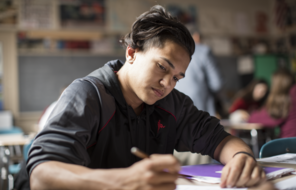
Exploring Identity

Stereotypes and “Single Stories”
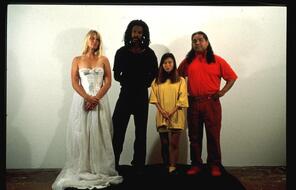
Universe of Obligation
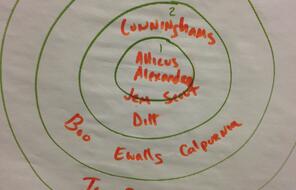
Introducing the Writing Prompt

The Concept of Race
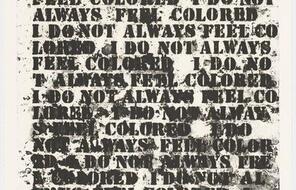
The Roots and Impact of Antisemitism

World War I and Its Aftermath in Germany
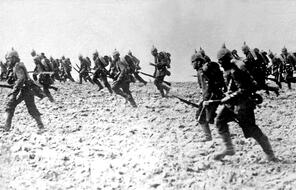
The Weimar Republic
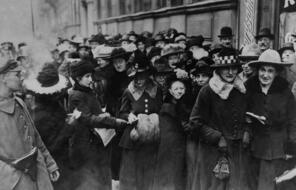
Introducing Evidence Logs
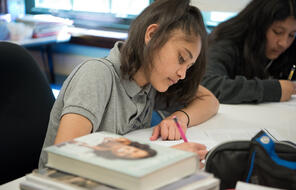
The Rise of the Nazi Party
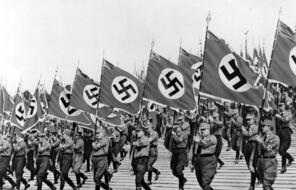
European Jewish Life before World War II
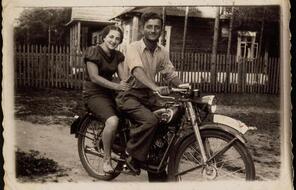
Dismantling Democracy
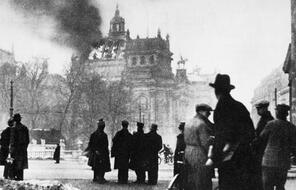
Do You Take the Oath?
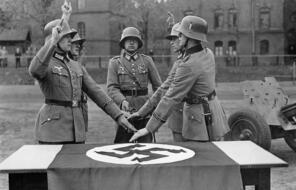
Laws and the National Community
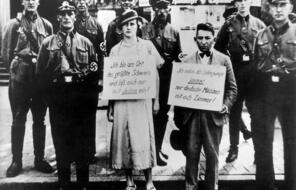
Adding to Evidence Logs, 1 of 3
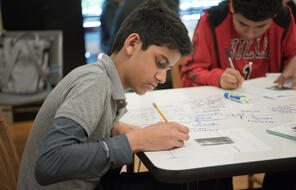
The Power of Propaganda
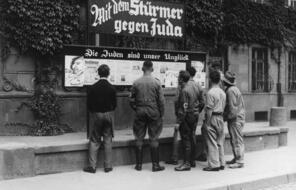
Youth and the National Community
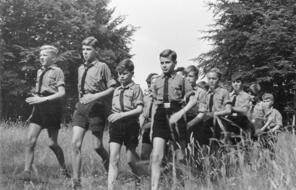
Kristallnacht
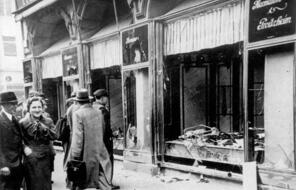
Responding to a Refugee Crisis
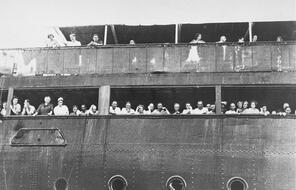
Race and Space
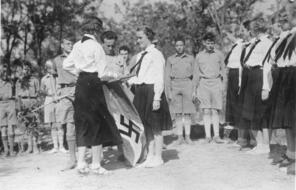
Adding to Evidence Logs, 2 of 3
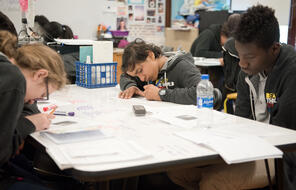
The Holocaust: Bearing Witness

The Holocaust: The Range of Responses

Justice and Judgement after the Holocaust
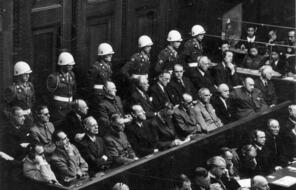
Adding to Evidence Logs, 3 of 3
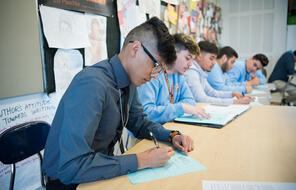
How Should We Remember?

Choosing to Participate
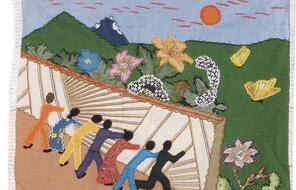
Refining the Thesis and Finalizing Evidence Logs
Additional Resources
Related Facing History Resources & Learning Opportunities
The Holocaust and Jewish Communities in Wartime North Africa
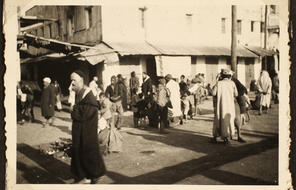
Teaching Holocaust and Human Behavior
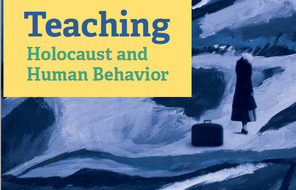
Holocaust and Human Behavior
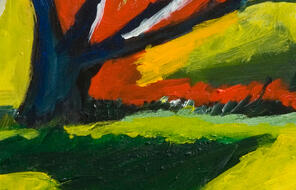
Gay Life Under Nazi Rule: The Legacy of Paragraph 175
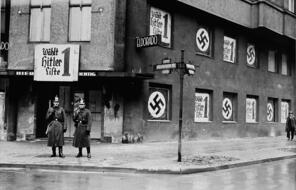
Teaching Holocaust and Human Behavior
You might also be interested in…
Dismantling Democracy

Do You Take the Oath?

European Jewish Life before World War II

Exploring Identity

The Holocaust: Bearing Witness

How Should We Remember?

Introducing The Unit

The Holocaust: The Range of Responses

Kristallnacht

Laws and the National Community

The Power of Propaganda

Responding to a Refugee Crisis

Unlimited Access to Learning. More Added Every Month.
Facing History & Ourselves is designed for educators who want to help students explore identity, think critically, grow emotionally, act ethically, and participate in civic life. It’s hard work, so we’ve developed some go-to professional learning opportunities to help you along the way.
Exploring ELA Text Selection with Julia Torres
On-Demand
Working for Justice, Equity and Civic Agency in Our Schools: A Conversation with Clint Smith
On-Demand
Centering Student Voices to Build Community and Agency
On-Demand

